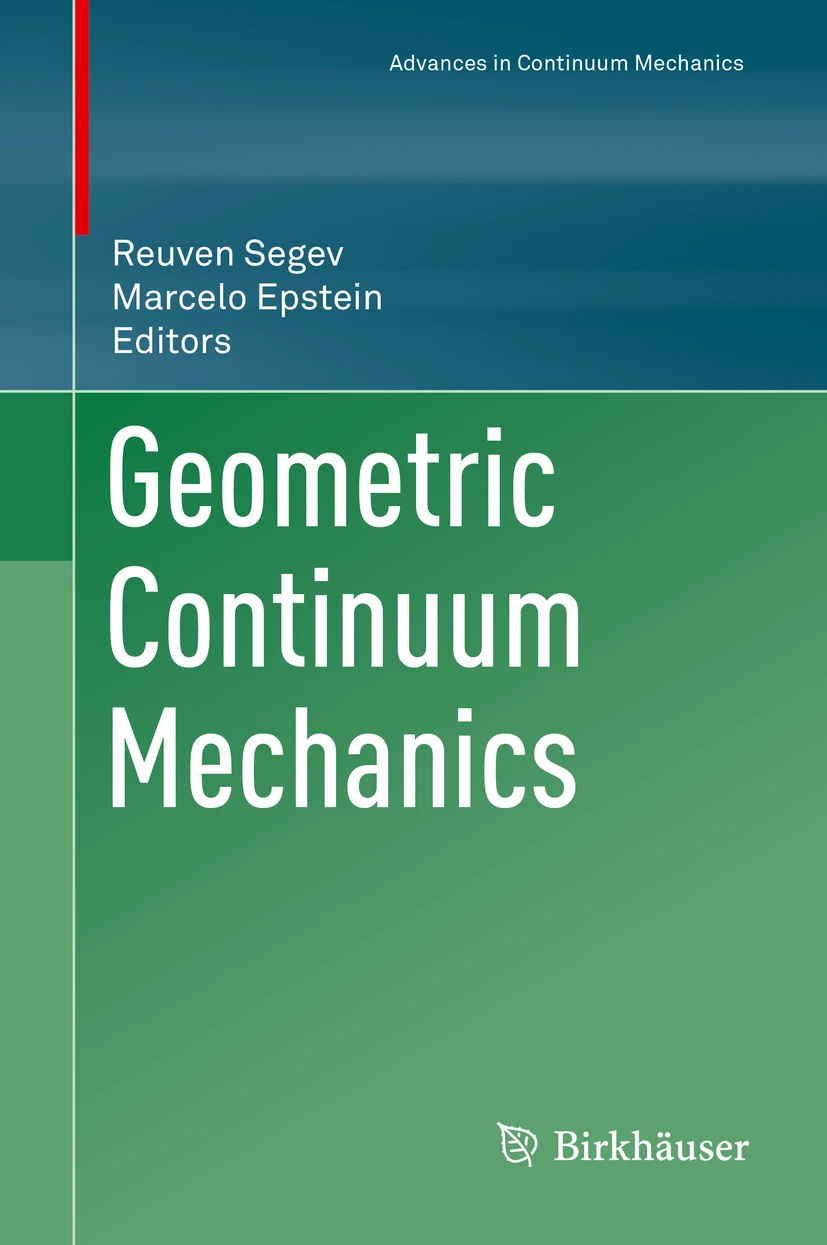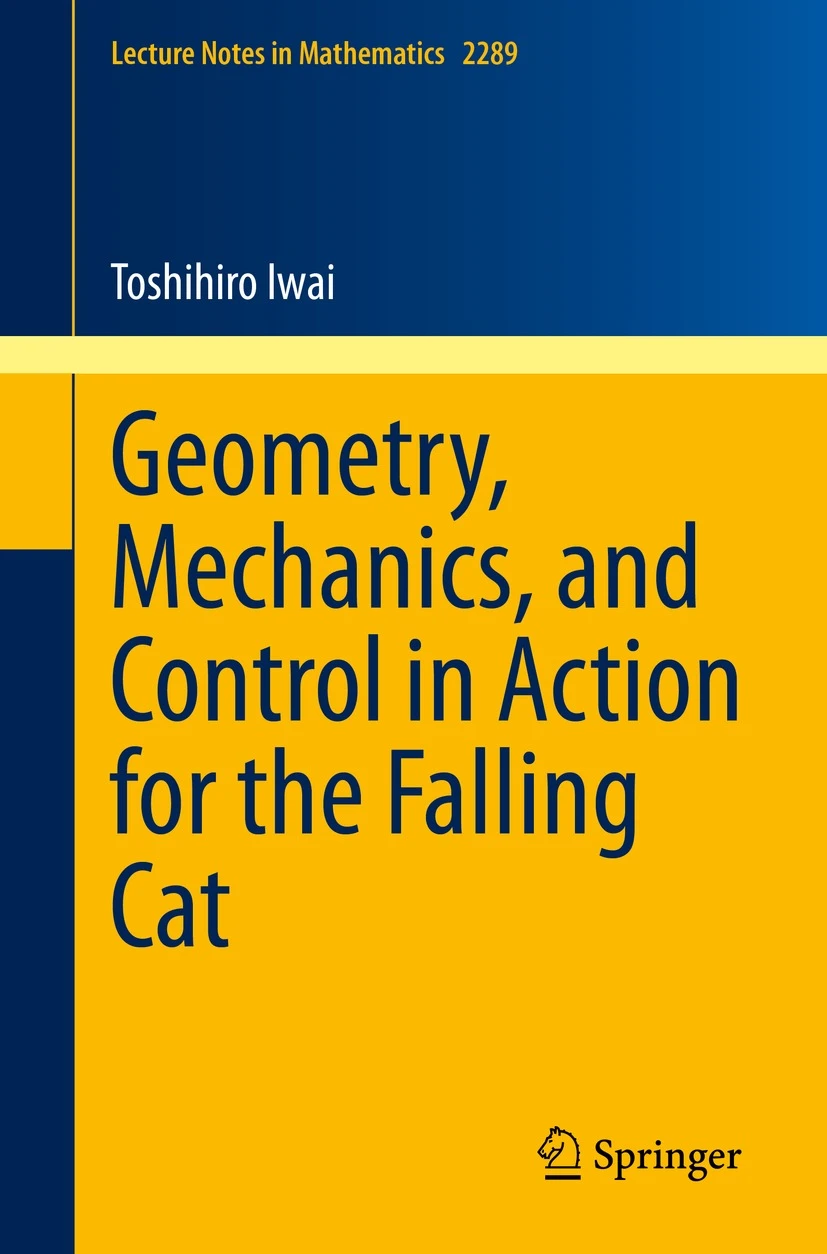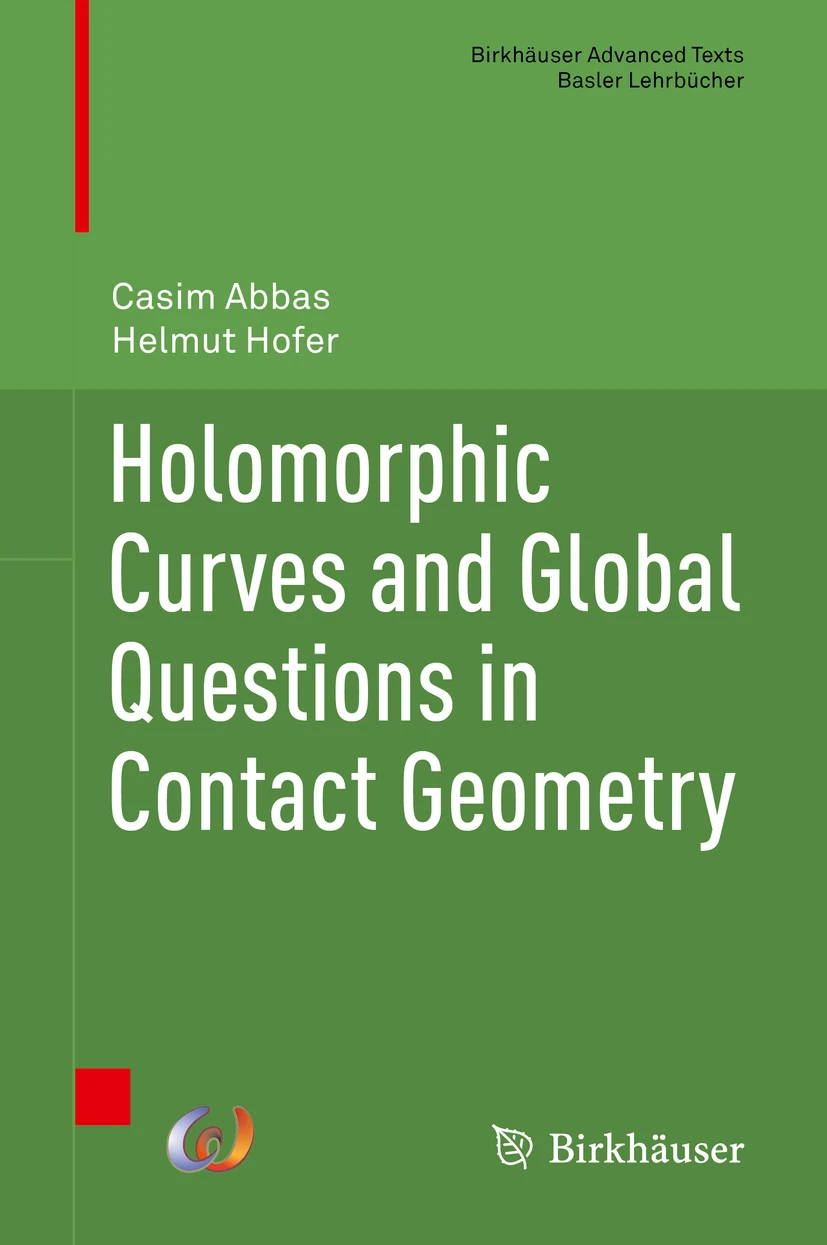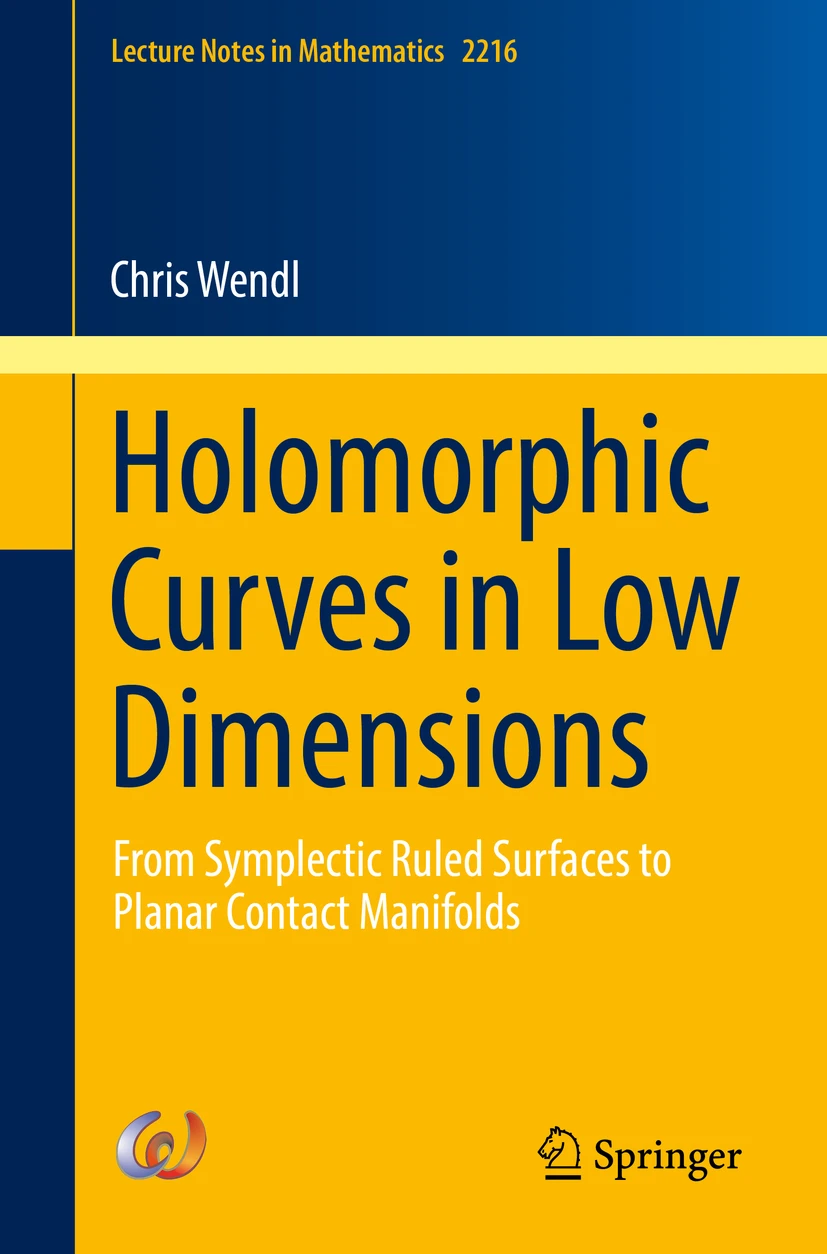-20%
Geometric Continuum Mechanics
Original price was: ₹ 11,411.00.₹ 9,129.00Current price is: ₹ 9,129.00.
This contributed volume explores the applications of various topics in modern differential geometry to the foundations of continuum mechanics. In particular, the contributors use notions from areas such as global analysis, algebraic topology, and geometric measure theory. Chapter authors are experts in their respective areas, and provide important insights from the most recent research. Organized into two parts, the book first covers kinematics, forces, and stress theory, and then addresses defects, uniformity, and homogeneity. Specific topics covered include: Global stress and hyper-stress theoriesApplications of de Rham currents to singular dislocationsManifolds of mappings for continuum mechanicsKinematics of defects in solid crystals Geometric Continuum Mechanics will appeal to graduate students and researchers in the fields of mechanics, physics, and engineering who seek a more rigorous mathematical understanding of the area. Mathematicians interested in applications of analysis and geometry will also find the topics covered here of interest.
-20%
Geometric Continuum Mechanics
Original price was: ₹ 11,411.00.₹ 9,129.00Current price is: ₹ 9,129.00.
This contributed volume explores the applications of various topics in modern differential geometry to the foundations of continuum mechanics. In particular, the contributors use notions from areas such as global analysis, algebraic topology, and geometric measure theory. Chapter authors are experts in their respective areas, and provide important insights from the most recent research. Organized into two parts, the book first covers kinematics, forces, and stress theory, and then addresses defects, uniformity, and homogeneity. Specific topics covered include: Global stress and hyper-stress theoriesApplications of de Rham currents to singular dislocationsManifolds of mappings for continuum mechanicsKinematics of defects in solid crystals Geometric Continuum Mechanics will appeal to graduate students and researchers in the fields of mechanics, physics, and engineering who seek a more rigorous mathematical understanding of the area. Mathematicians interested in applications of analysis and geometry will also find the topics covered here of interest.
-20%
Geometric Continuum Mechanics
Original price was: ₹ 11,411.00.₹ 9,129.00Current price is: ₹ 9,129.00.
This contributed volume explores the applications of various topics in modern differential geometry to the foundations of continuum mechanics. In particular, the contributors use notions from areas such as global analysis, algebraic topology, and geometric measure theory. Chapter authors are experts in their respective areas, and provide important insights from the most recent research. Organized into two parts, the book first covers kinematics, forces, and stress theory, and then addresses defects, uniformity, and homogeneity. Specific topics covered include: Global stress and hyper-stress theoriesApplications of de Rham currents to singular dislocationsManifolds of mappings for continuum mechanicsKinematics of defects in solid crystals Geometric Continuum Mechanics will appeal to graduate students and researchers in the fields of mechanics, physics, and engineering who seek a more rigorous mathematical understanding of the area. Mathematicians interested in applications of analysis and geometry will also find the topics covered here of interest.
-20%
Geometric Continuum Mechanics
Original price was: ₹ 11,411.00.₹ 9,129.00Current price is: ₹ 9,129.00.
This contributed volume explores the applications of various topics in modern differential geometry to the foundations of continuum mechanics. In particular, the contributors use notions from areas such as global analysis, algebraic topology, and geometric measure theory. Chapter authors are experts in their respective areas, and provide important insights from the most recent research. Organized into two parts, the book first covers kinematics, forces, and stress theory, and then addresses defects, uniformity, and homogeneity. Specific topics covered include: Global stress and hyper-stress theoriesApplications of de Rham currents to singular dislocationsManifolds of mappings for continuum mechanicsKinematics of defects in solid crystals Geometric Continuum Mechanics will appeal to graduate students and researchers in the fields of mechanics, physics, and engineering who seek a more rigorous mathematical understanding of the area. Mathematicians interested in applications of analysis and geometry will also find the topics covered here of interest.
-21%
Geometrie Symplectique et Mecanique
Original price was: ₹ 3,324.00.₹ 2,659.00Current price is: ₹ 2,659.00.
-21%
Geometrie Symplectique et Mecanique
Original price was: ₹ 3,324.00.₹ 2,659.00Current price is: ₹ 2,659.00.
-20%
Geometry, Mechanics, and Control in Action for the Falling Cat
Original price was: ₹ 5,230.00.₹ 4,184.00Current price is: ₹ 4,184.00.
The falling cat is an interesting theme to pursue, in which geometry, mechanics, and control are in action together. As is well known, cats can almost always land on their feet when tossed into the air in an upside-down attitude. If cats are not given a non-vanishing angular momentum at an initial instant, they cannot rotate during their motion, and the motion they can make in the air is vibration only. However, cats accomplish a half turn without rotation when landing on their feet. In order to solve this apparent mystery, one needs to thoroughly understand rotations and vibrations.The connection theory in differential geometry can provide rigorous definitions of rotation and vibration for many-body systems. Deformable bodies of cats are not easy to treat mechanically. A feasible way to approach the question of the falling cat is to start with many-body systems and then proceed to rigid bodies and, further, to jointed rigid bodies, which can approximate the body of a cat. In this book, the connection theory is applied first to a many-body system to show that vibrational motions of the many-body system can result in rotations without performing rotational motions and then to the cat model consisting of jointed rigid bodies. On the basis of this geometric setting, mechanics of many-body systems and of jointed rigid bodies must be set up. In order to take into account the fact that cats can deform their bodies, three torque inputs which may give a twist to the cat model are applied as control inputs under the condition of the vanishing angular momentum. Then, a control is designed according to the port-controlled Hamiltonian method for the model cat to perform a half turn and to halt the motion upon landing. The book also gives a brief review of control systems through simple examples to explain the role of control inputs.
-20%
Geometry, Mechanics, and Control in Action for the Falling Cat
Original price was: ₹ 5,230.00.₹ 4,184.00Current price is: ₹ 4,184.00.
The falling cat is an interesting theme to pursue, in which geometry, mechanics, and control are in action together. As is well known, cats can almost always land on their feet when tossed into the air in an upside-down attitude. If cats are not given a non-vanishing angular momentum at an initial instant, they cannot rotate during their motion, and the motion they can make in the air is vibration only. However, cats accomplish a half turn without rotation when landing on their feet. In order to solve this apparent mystery, one needs to thoroughly understand rotations and vibrations.The connection theory in differential geometry can provide rigorous definitions of rotation and vibration for many-body systems. Deformable bodies of cats are not easy to treat mechanically. A feasible way to approach the question of the falling cat is to start with many-body systems and then proceed to rigid bodies and, further, to jointed rigid bodies, which can approximate the body of a cat. In this book, the connection theory is applied first to a many-body system to show that vibrational motions of the many-body system can result in rotations without performing rotational motions and then to the cat model consisting of jointed rigid bodies. On the basis of this geometric setting, mechanics of many-body systems and of jointed rigid bodies must be set up. In order to take into account the fact that cats can deform their bodies, three torque inputs which may give a twist to the cat model are applied as control inputs under the condition of the vanishing angular momentum. Then, a control is designed according to the port-controlled Hamiltonian method for the model cat to perform a half turn and to halt the motion upon landing. The book also gives a brief review of control systems through simple examples to explain the role of control inputs.
-20%
Holomorphic Curves and Global Questions in Contact Geometry
Original price was: ₹ 6,656.00.₹ 5,325.00Current price is: ₹ 5,325.00.
This book explains the foundations of holomorphic curve theory in contact geometry. By using a particular geometric problem as a starting point the authors guide the reader into the subject. As such it ideally serves as preparation and as entry point for a deeper study of the analysis underlying symplectic field theory.An introductory chapter sets the stage explaining some of the basic notions of contact geometry and the role of holomorphic curves in the field. The authors proceed to the heart of the material providing a detailed exposition about finite energy planes and periodic orbits (chapter 4) to disk filling methods and applications (chapter 9).The material is self-contained. It includes a number of technical appendices giving the geometric analysis foundations for the main results, so that one may easily follow the discussion. Graduate students as well as researchers who want to learn the basics of this fast developing theory will highly appreciate this accessible approach taken by the authors.
-20%
Holomorphic Curves and Global Questions in Contact Geometry
Original price was: ₹ 6,656.00.₹ 5,325.00Current price is: ₹ 5,325.00.
This book explains the foundations of holomorphic curve theory in contact geometry. By using a particular geometric problem as a starting point the authors guide the reader into the subject. As such it ideally serves as preparation and as entry point for a deeper study of the analysis underlying symplectic field theory.An introductory chapter sets the stage explaining some of the basic notions of contact geometry and the role of holomorphic curves in the field. The authors proceed to the heart of the material providing a detailed exposition about finite energy planes and periodic orbits (chapter 4) to disk filling methods and applications (chapter 9).The material is self-contained. It includes a number of technical appendices giving the geometric analysis foundations for the main results, so that one may easily follow the discussion. Graduate students as well as researchers who want to learn the basics of this fast developing theory will highly appreciate this accessible approach taken by the authors.
-20%
Holomorphic Curves in Low Dimensions
Original price was: ₹ 5,230.00.₹ 4,184.00Current price is: ₹ 4,184.00.
This monograph provides an accessible introduction to the applications of pseudoholomorphic curves in symplectic and contact geometry, with emphasis on dimensions four and three.
The first half of the book focuses on McDuff's characterization of symplectic rational and ruled surfaces, one of the classic early applications of holomorphic curve theory. The proof presented here uses the language of Lefschetz fibrations and pencils, thus it includes some background on these topics, in addition to a survey of the required analytical results on holomorphic curves. Emphasizing applications rather than technical results, the analytical survey mostly refers to other sources for proofs, while aiming to provide precise statements that are widely applicable, plus some informal discussion of the analytical ideas behind them. The second half of the book then extends this program in two complementary directions: (1) a gentle introduction to Gromov-Witten theory and complete proof of the classification of uniruled symplectic 4-manifolds; and (2) a survey of punctured holomorphic curves and their applications to questions from 3-dimensional contact topology, such as classifying the symplectic fillings of planar contact manifolds.
This book will be particularly useful to graduate students and researchers who have basic literacy in symplectic geometry and algebraic topology, and would like to learn how to apply standard techniques from holomorphic curve theory without dwelling more than necessary on the analytical details.
This book is also part of the Virtual Series on Symplectic Geometry http://www.springer.com/series/16019
-20%
Holomorphic Curves in Low Dimensions
Original price was: ₹ 5,230.00.₹ 4,184.00Current price is: ₹ 4,184.00.
This monograph provides an accessible introduction to the applications of pseudoholomorphic curves in symplectic and contact geometry, with emphasis on dimensions four and three.
The first half of the book focuses on McDuff's characterization of symplectic rational and ruled surfaces, one of the classic early applications of holomorphic curve theory. The proof presented here uses the language of Lefschetz fibrations and pencils, thus it includes some background on these topics, in addition to a survey of the required analytical results on holomorphic curves. Emphasizing applications rather than technical results, the analytical survey mostly refers to other sources for proofs, while aiming to provide precise statements that are widely applicable, plus some informal discussion of the analytical ideas behind them. The second half of the book then extends this program in two complementary directions: (1) a gentle introduction to Gromov-Witten theory and complete proof of the classification of uniruled symplectic 4-manifolds; and (2) a survey of punctured holomorphic curves and their applications to questions from 3-dimensional contact topology, such as classifying the symplectic fillings of planar contact manifolds.
This book will be particularly useful to graduate students and researchers who have basic literacy in symplectic geometry and algebraic topology, and would like to learn how to apply standard techniques from holomorphic curve theory without dwelling more than necessary on the analytical details.
This book is also part of the Virtual Series on Symplectic Geometry http://www.springer.com/series/16019
-21%
Introduction to Differential Geometry
Original price was: ₹ 6,181.00.₹ 4,944.00Current price is: ₹ 4,944.00.
This textbook is suitable for a one semester lecture course on differential geometry for students of mathematics or STEM disciplines with a working knowledge of analysis, linear algebra, complex analysis, and point set topology. The book treats the subject both from an extrinsic and an intrinsic view point.The first chapters give a historical overview of the field and contain an introduction to basic concepts such as manifolds and smooth maps, vector fields and flows, and Lie groups, leading up to the theorem of Frobenius. Subsequent chapters deal with the Levi-Civita connection, geodesics, the Riemann curvature tensor, a proof of the Cartan-Ambrose-Hicks theorem, as well as applications to flat spaces, symmetric spaces, and constant curvature manifolds. Also included are sections about manifolds with nonpositive sectional curvature, the Ricci tensor, the scalar curvature, and the Weyl tensor.
An additional chapter goes beyond the scope of a one semester lecture course and deals with subjects such as conjugate points and the Morse index, the injectivity radius, the group of isometries and the Myers-Steenrod theorem, and Donaldson's differential geometric approach to Lie algebra theory.
-21%
Introduction to Differential Geometry
Original price was: ₹ 6,181.00.₹ 4,944.00Current price is: ₹ 4,944.00.
This textbook is suitable for a one semester lecture course on differential geometry for students of mathematics or STEM disciplines with a working knowledge of analysis, linear algebra, complex analysis, and point set topology. The book treats the subject both from an extrinsic and an intrinsic view point.The first chapters give a historical overview of the field and contain an introduction to basic concepts such as manifolds and smooth maps, vector fields and flows, and Lie groups, leading up to the theorem of Frobenius. Subsequent chapters deal with the Levi-Civita connection, geodesics, the Riemann curvature tensor, a proof of the Cartan-Ambrose-Hicks theorem, as well as applications to flat spaces, symmetric spaces, and constant curvature manifolds. Also included are sections about manifolds with nonpositive sectional curvature, the Ricci tensor, the scalar curvature, and the Weyl tensor.
An additional chapter goes beyond the scope of a one semester lecture course and deals with subjects such as conjugate points and the Morse index, the injectivity radius, the group of isometries and the Myers-Steenrod theorem, and Donaldson's differential geometric approach to Lie algebra theory.
-21%
Introduction to Riemannian Manifolds
Original price was: ₹ 6,181.00.₹ 4,944.00Current price is: ₹ 4,944.00.
This textbook is designed for a one or two semester graduate course on Riemannian geometry for students who are familiar with topological and differentiable manifolds. The second edition has been adapted, expanded, and aptly retitled from Lee’s earlier book, Riemannian Manifolds: An Introduction to Curvature. Numerous exercises and problem sets provide the student with opportunities to practice and develop skills; appendices contain a brief review of essential background material. While demonstrating the uses of most of the main technical tools needed for a careful study of Riemannian manifolds, this text focuses on ensuring that the student develops an intimate acquaintance with the geometric meaning of curvature. The reasonably broad coverage begins with a treatment of indispensable tools for working with Riemannian metrics such as connections and geodesics. Several topics have been added, including an expanded treatment of pseudo-Riemannian metrics, a more detailed treatment of homogeneous spaces and invariant metrics, a completely revamped treatment of comparison theory based on Riccati equations, and a handful of new local-to-global theorems, to name just a few highlights.
-21%
Introduction to Riemannian Manifolds
Original price was: ₹ 6,181.00.₹ 4,944.00Current price is: ₹ 4,944.00.
This textbook is designed for a one or two semester graduate course on Riemannian geometry for students who are familiar with topological and differentiable manifolds. The second edition has been adapted, expanded, and aptly retitled from Lee’s earlier book, Riemannian Manifolds: An Introduction to Curvature. Numerous exercises and problem sets provide the student with opportunities to practice and develop skills; appendices contain a brief review of essential background material. While demonstrating the uses of most of the main technical tools needed for a careful study of Riemannian manifolds, this text focuses on ensuring that the student develops an intimate acquaintance with the geometric meaning of curvature. The reasonably broad coverage begins with a treatment of indispensable tools for working with Riemannian metrics such as connections and geodesics. Several topics have been added, including an expanded treatment of pseudo-Riemannian metrics, a more detailed treatment of homogeneous spaces and invariant metrics, a completely revamped treatment of comparison theory based on Riccati equations, and a handful of new local-to-global theorems, to name just a few highlights.
-21%
Introduction to Riemannian Manifolds
Original price was: ₹ 4,754.00.₹ 3,803.00Current price is: ₹ 3,803.00.
This textbook is designed for a one or two semester graduate course on Riemannian geometry for students who are familiar with topological and differentiable manifolds. The second edition has been adapted, expanded, and aptly retitled from Lee’s earlier book, Riemannian Manifolds: An Introduction to Curvature. Numerous exercises and problem sets provide the student with opportunities to practice and develop skills; appendices contain a brief review of essential background material.
While demonstrating the uses of most of the main technical tools needed for a careful study of Riemannian manifolds, this text focuses on ensuring that the student develops an intimate acquaintance with the geometric meaning of curvature. The reasonably broad coverage begins with a treatment of indispensable tools for working with Riemannian metrics such as connections and geodesics. Several topics have been added, including an expanded treatment of pseudo-Riemannian metrics, a more detailed treatment of homogeneous spaces and invariant metrics, a completely revamped treatment of comparison theory based on Riccati equations, and a handful of new local-to-global theorems, to name just a few highlights.
-21%
Introduction to Riemannian Manifolds
Original price was: ₹ 4,754.00.₹ 3,803.00Current price is: ₹ 3,803.00.
This textbook is designed for a one or two semester graduate course on Riemannian geometry for students who are familiar with topological and differentiable manifolds. The second edition has been adapted, expanded, and aptly retitled from Lee’s earlier book, Riemannian Manifolds: An Introduction to Curvature. Numerous exercises and problem sets provide the student with opportunities to practice and develop skills; appendices contain a brief review of essential background material.
While demonstrating the uses of most of the main technical tools needed for a careful study of Riemannian manifolds, this text focuses on ensuring that the student develops an intimate acquaintance with the geometric meaning of curvature. The reasonably broad coverage begins with a treatment of indispensable tools for working with Riemannian metrics such as connections and geodesics. Several topics have been added, including an expanded treatment of pseudo-Riemannian metrics, a more detailed treatment of homogeneous spaces and invariant metrics, a completely revamped treatment of comparison theory based on Riccati equations, and a handful of new local-to-global theorems, to name just a few highlights.







